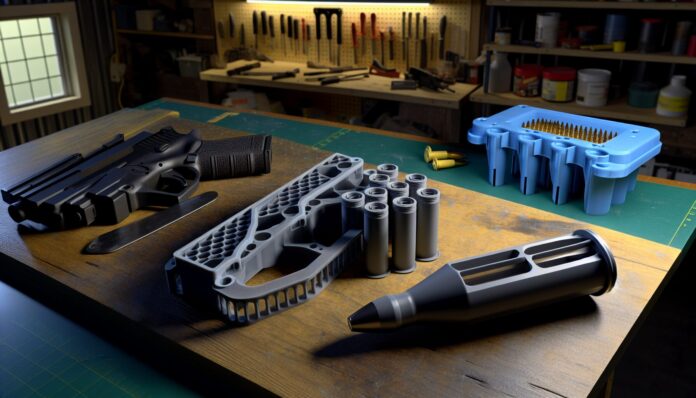A man from Bentilee, Staffordshire, has been sentenced to five years in prison after police discovered a cache of 3D-printed firearms and ammunition in his home. The case highlights growing concerns over the misuse of 3D printing technology for illegal weapon manufacturing.
3D Printing Firearms: A Growing Concern
3D printing, also known as additive manufacturing, has revolutionized industries from aerospace to healthcare. However, its accessibility has also raised alarms in law enforcement circles. The ability to produce functional firearms using consumer-grade 3D printers has become a serious issue, especially when such weapons are unregistered and untraceable.
In this case, 39-year-old Grant Wilkinson was arrested after police executed a search warrant at his home in Bentilee. Officers found a 3D printer, digital blueprints for firearms, and several printed gun components. Forensic analysis confirmed that the parts could be assembled into working weapons, and ammunition was also found on the premises.
Details of the Investigation and Sentencing
Staffordshire Police began investigating Wilkinson after receiving intelligence suggesting he was involved in illegal weapons manufacturing. Upon searching his home, they discovered a makeshift workshop equipped with a 3D printer and materials used to produce firearm parts. Investigators also found a USB drive containing CAD files for various gun models.
Wilkinson was charged with multiple offenses, including possession of a firearm and ammunition without a license, and manufacturing prohibited weapons. He pleaded guilty and was sentenced at Stoke-on-Trent Crown Court to five years in prison.
Detective Inspector Louise Booker of Staffordshire Police stated, “This case demonstrates the real-world dangers of 3D-printed firearms. These weapons are not toys—they are capable of causing serious harm or death.”
Legal and Technical Implications of 3D-Printed Guns
In the UK, it is illegal to possess or manufacture firearms without proper licensing. The Firearms Act 1968 and its amendments make it a criminal offense to produce or possess prohibited weapons, including those made using 3D printing technology.
Technically, 3D-printed guns are often made from polymer materials using FDM (Fused Deposition Modeling) printers. While early models were unreliable, advances in materials and design have made them increasingly functional. Some designs incorporate metal parts or are reinforced to withstand the pressures of firing live ammunition.
Law enforcement agencies worldwide are now investing in training and technology to detect and prevent the spread of 3D-printed weapons. In the UK, police forces are working closely with the National Crime Agency and international partners to monitor online forums and file-sharing platforms where weapon blueprints are distributed.
Balancing Innovation and Public Safety
While 3D printing offers immense potential for innovation, this case underscores the importance of responsible use. The same technology that enables rapid prototyping and medical breakthroughs can also be misused for criminal purposes.
Governments and industry leaders are calling for tighter regulations on the distribution of firearm blueprints and the sale of 3D printers capable of producing high-strength components. Some experts advocate for digital rights management (DRM) systems that prevent printers from producing restricted items.
As 3D printing continues to evolve, so too must the legal and ethical frameworks that govern its use. The Bentilee case serves as a stark reminder of the dual-edged nature of technological progress.
Source: BBC

